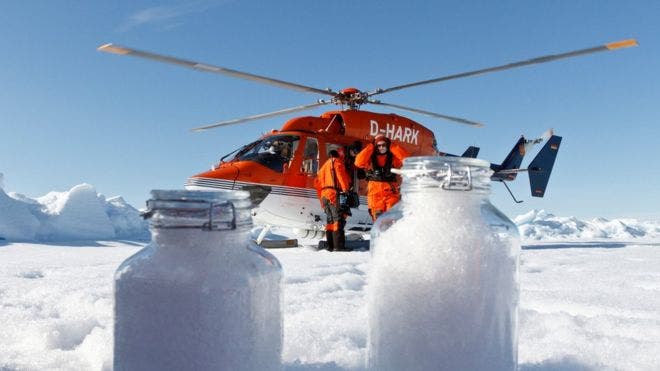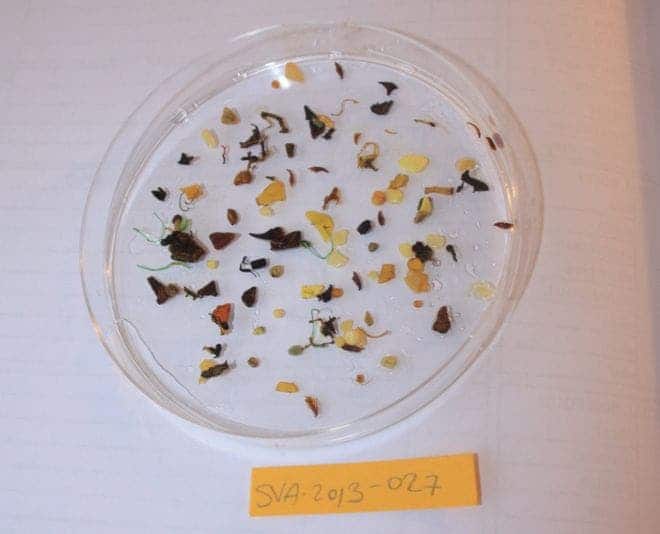The Arctic is thought to be one of the world’s most pristine environments, so researchers were shocked when they found a staggering amount of plastic particles in the snow.
As many as 10,000 microplastics per liter were found, which scientists think fell from the atmosphere as snow. Small fragments of rubber and fibers were also found along with the tiny plastic pollution.
Microplastics are plastic fragments less than 5 millimeters in size. According to a recent study, humans ingest as many as 100,000 pieces of microplastics a year. Their effect on the health of humans and wildlife is unclear, but what’s certain is that they are a proxy for environmental pollution that must stop.
The snow was sampled in flasks from the Svalbard islands and then analyzed in a lab at the Alfred Wegener Institute in Bremerhaven, Germany.
Most of the contaminants found in the Arctic snow seem to be made of natural materials like plant cellulose and animal fur. However, there was quite a number of particles of plastic, rubber tyres, varnish, paint, and synthetic fibers.
The researchers say it is challenging to ascertain the source of this pollution, which is probably both domestic from nearby ships as well as remote. However, the researchers are confident that the microplastics in the snow comes from the air. They reported in the journal Science Advances.
Being small and lightweight, the microplastics are easily blown by winds which transport them over long distances through the atmosphere. Finally, they’re washed out of the atmosphere by rain or snow. This mechanism implies that there is no place on Earth — no matter how remote and inhospitable — that is spared from microplastic pollution.
Indeed, according to a comprehensive review of scientific evidence published by the European Union‘s Scientific Advice Mechanism in 2019, microplastics are now present in every part of the environment.
For instance, the Pyrenees Mountains have been the sentinels of anthropogenic pollution as far back as 685 AD, being largely shielded from mining and industrial activities. However, this is no longer the case — microplastic is coming through the air, a 2019 study showed.
The findings serve as a wakeup call. They suggest that urgent action is required to change the way plastics, paints, and waste is managed. The alternative is painfully watching how even the most pristine places on Earth become enveloped in our pollution.











